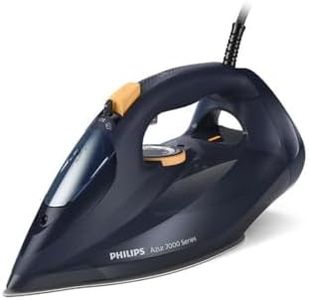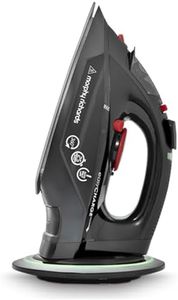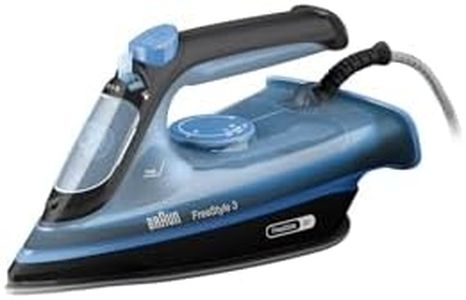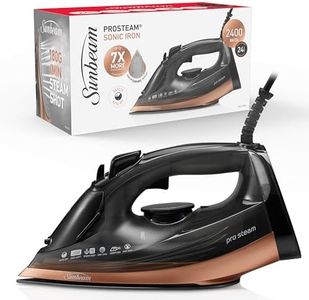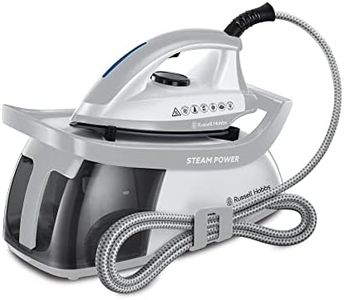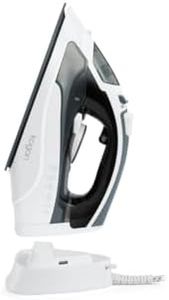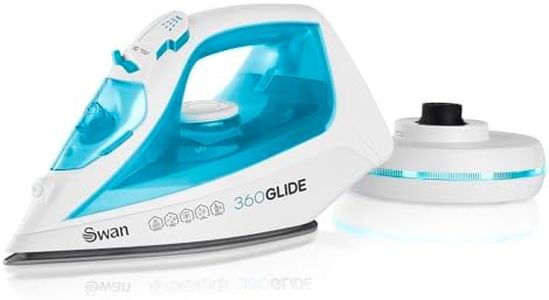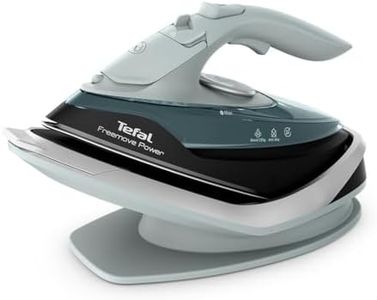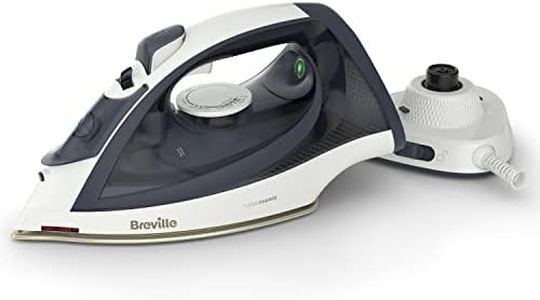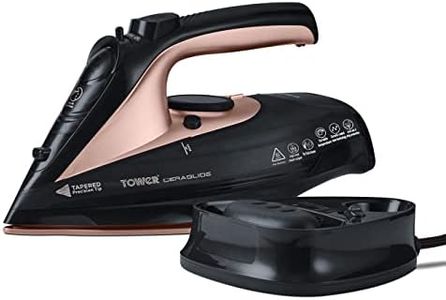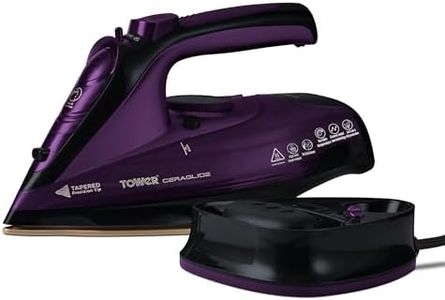We Use CookiesWe use cookies to enhance the security, performance,
functionality and for analytical and promotional activities. By continuing to browse this site you
are agreeing to our privacy policy
10 Best Cordless Steam Irons
From leading brands and best sellers available on the web.Buying Guide for the Best Cordless Steam Irons
Shopping for a cordless steam iron can make your ironing routine much more convenient. With no power cord in your way, you have more freedom to move and maneuver, which is especially useful for ironing larger items like sheets or tricky spots on shirts. To find the right fit, it's useful to understand what makes one cordless iron different from another and what spec values actually matter, depending on your ironing habits and needs.Battery Life / Cordless Operation TimeBattery life, or how long the iron can be used unplugged before it needs to recharge, is very important for cordless steam irons. This affects how many clothes you can iron in one go. Irons often range from 10 to 30 minutes of cordless operation per charge cycle. If you tend to iron big loads at once, look for models with longer operation time or quick recharge capability. For lighter or occasional ironing, shorter operation times may be enough. Ask yourself how long your usual ironing session lasts to decide what's suitable.
Heat-up TimeHeat-up time is the amount of time the iron takes to reach its working temperature from being switched on. Faster heat-up means less waiting and more efficiency. Heat-up times can vary, often between 30 seconds and a few minutes. If you prefer to iron quickly or find yourself ironing in a rush, a model with a faster heat-up time will be more convenient. If you usually plan your ironing session, a slower heat-up may not be an issue.
Steam OutputSteam output measures how much steam is released by the iron, usually expressed in grams per minute. Higher steam output helps remove wrinkles more easily, especially on thick fabrics. Generally, light fabrics need less steam, while heavier materials or stubborn creases benefit from more. If you mostly iron lightweight shirts or blouses, a lower steam output may be sufficient. However, for denim or linens, consider irons with higher steam capabilities.
Water Tank CapacityThe water tank holds the water needed to make steam. A larger tank means less frequent refilling but can make the iron heavier, while a smaller tank keeps the iron light but needs more refilling. Capacities often range from about 200 to 400 ml. For long sessions with lots of steam, a larger tank can be helpful. For quick touch-ups or if you prefer a lighter iron, a smaller tank might be more comfortable.
Soleplate TypeThe soleplate is the flat surface that heats up and touches your clothes. Materials like ceramic, stainless steel, and nonstick coatings are common. Ceramic heats evenly and is gentle on clothes, stainless steel is very durable and glides well, nonstick is easy to clean. If you value easy movement and durability, stainless steel or ceramic is preferable. Choose a nonstick plate for occasional use or easy cleanup. Think about the types of fabrics you iron most often to help guide your choice.
Weight and ErgonomicsWeight and ergonomics affect how comfortable the iron is to hold and maneuver. Lighter irons are easier to use for long periods or if you have limited strength, but may struggle with stubborn wrinkles. Heavier irons can press out creases more easily but may cause fatigue. Ergonomics includes handle design and balance; a comfortable grip makes ironing a lot more pleasant. Think about your own strength, how much ironing you do at once, and if wrist comfort is important to you.
Charging Base DesignCordless steam irons come with a charging base, which you rest the iron on between uses, or whenever it needs reheating. Some bases are simple, while others have features like quick recharge, auto-align, or secure locking. If you expect to set down and pick up the iron frequently during use, a fast and easy docking mechanism saves time. Consider how often you pause during ironing and how much convenience matters for your workflow.
